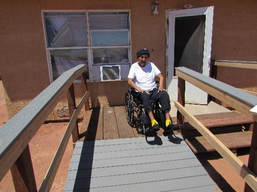 Many of the homes we visit through our home weatherization and Native Home Resource Network programs are those of elders. Red Feather has chosen to focus on elders because they are more susceptible to the negative health impacts of housing disrepair than other age groups and have more difficulty maintaining their homes. In addition to needing to maintain homes, Seniors almost always need additional home modifications like accessibility ramps, widening doorways, installing grab bars in bathrooms, etc. Preventing falls is of particular importance, since they are the leading cause of injury-related visits to the emergency room in the U.S. and the primary cause of accidental deaths in people over 65. At least one third of all falls come from tripping over objects, poor lighting, or lack of grab bars. Fall risk is further complicated by other health problems that, sadly, have much higher rates in native communities; such as arthritis, obesity, diabetes and respiratory diseases. 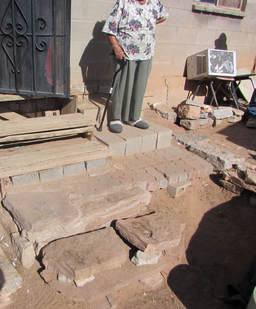 Historically, native elders have been revered in their communities for their life experiences and knowledge of traditional practices and lifeways. And while this principle still holds true, it has been complicated by many of the unfortunate side effects of historical trauma, federal cultural eradication policies, poverty, and geographic isolation. All of this has left many elders lacking the support needed to successfully age in place. The desire to age in place is not a phenomenon isolated to tribal lands. According to AARP, nearly 90 percent of seniors nationally want to stay in their own homes as they age. Very few prefer moving to a long-term care facility where they lose some of their personal freedoms and comforts. For many Native Americans , the only assisted living facilities are located hundreds of miles away from their homeland; which often makes those who have a deep spiritual connection to both their home and land willing to endure significant hardships to stay there. In 2017 we received a grant from Kendal Charitable Funds that enabled us to work with our partner at Northern Arizona University, Dr. Lisa Hardy, to develop a training module that increases the capacity of Hopi agencies and individuals to perform home health and safety assessments for elders and instruct home occupants how to remedy basic problems. This involved producing classroom curriculum, developing and distributing Helping Tribal Elders Age in Place Workbooks and Healthy Home instructional flashcards, and distributing DIY Aging In Place Kits. Additionally, we provided a two-day Aging In Place Home Health Assessment training to 12 individuals representing Hopi tribal government and Village Administrative offices and some regular homeowners from the Hopi community. In total, seven villages participated in the delivery of the program, conducting a total of 22 home assessments and delivering 24 aging in place kits focused on preventing falls and improving air quality. At the completion of this work, we received an additional round of funding from Kendal Charitable Funds to continue building on our current work with community partners, performing more home assessments and delivering more DIY Aging In Place Kits. 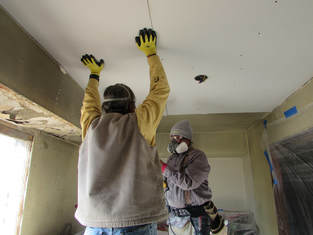 It has been another busy year for our home weatherization program. We are now working in 10 of the 12 Hopi villages - last year we were primarily working in just one – and are now accepting applications from Navajos. For 2018 we have already substantially weatherized 38 homes and recently received a $100,000 extension to our contract that will help more families get ready for the coming winter and keep our local 2-person crew employed. One the great benefits of home weatherization is the impact it has on improving the comfort of the indoor living environment, which includes making homes cooler in the summer and warmer in the winter. A well weatherized home requires less heating and cooling, which in the case of many Hopi and Navajo households means a reduction in the use of coal burning during winter months. Less coal burning can result in cleaner air quality, both indoor and outdoor, which can reduce wide-spread respiratory ailments. Additionally, more efficient homes also have lower energy costs, which are often a crippling financial burden for many low-income households. In fact, low-income U.S. households spend 7.2 % of their income on utilities bills, which is more than two times that of median income households (3.5%) and three time greater than higher income households (2.3%). This results in families having to make difficult decisions, such as sacrificing food quality and medical care over keeping their home warm or lights on. The U.S. Department of Energy reports that after weatherization, families have homes that are “more livable, resulting in fewer missed days of work and decreased out-of-pocket medical expenses by an average of $514 (per year).” Additionally, at each house we visit, we spend time educating family members not only about ways they can further reduce their energy bills, but also about the connection between their health and their home environment-covering a variety of topics from mold and lead paint to pest management. Special thanks to APS for funding this home weatherization program as well as funding our DIY Home Weatherization and Women’s DIY Home Repair workshops that we will be delivering this fall.  When we started sharing with Hopis and Navajos the relationship between home environment and occupant health, and empowering them to make their homes safer, we soon encountered families where the resources required to remedy their problem were far greater than the family could assemble on their own. This is why we developed the Native Home Resource Network (NHRN). This program allows us to help families assemble the missing resources that are needed to solve their own home health and safety repairs. 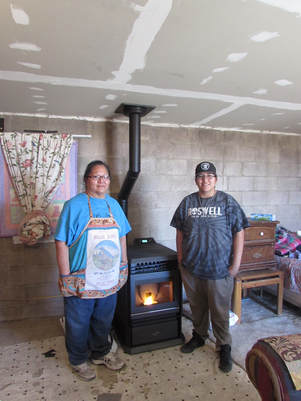 The assistance we provided the Lomabalaquihoya family last winter is a good example of how the program works. Carolyn and Robert had taken our DIY Home Weatherization workshop and received a home weatherization kit that included a CO alarm which they installed. A few months later a cracked coal stove caused poisonous fumes to fill their single room home. Luckily their CO alarm woke Carolyn who was able to awake the other family members and everyone was able to escape safely. Desperately in need of a new stove, Red Feather called around looking for discounts on stoves and created a crowd funding campaign which many of you contributed to. Carolyn and Robert donated several pieces of their magnificent artwork for us to use as thank you gifts and raffle prizes in their fundraising efforts and to help other families. With a discount from Roof Dancers, a Flagstaff stove retailer and installer, and money raised from the crowd funding campaign, the Lomabalaquihoyas had a new energy efficient pellet stove installed before the end of winter.  This year Red Feather donated 100% of the proceeds we earned from Arizona Gives Day donations to Lilly Miller, a Navajo elder and Vietnam Veteran’s widow, who is trying to build a new home for her and her family, who are currently living in an old trailer without electricity or running water. Thanks to your donations and the help of a volunteer carpenter who used only a hand saw and a hammer, Lilly has the walls up on her new home. Red Feather continues to help her fundraising efforts to hopefully get a roof, doors and windows installed before the year is over.  Belva Ann Starkey, a Hopi elder from Sipaulovi Village, suffered severe roof damage in a storm. We are assisting her with assembling the resources she needs to get her roof repaired. So far we have mounted a fundraising campaign and are in discussions with Belva’s church and Hopi tribal agencies who may have some funding to help. Click here to help Belva with a new roof Through this program we also were able to connect volunteers and funding from Wells Fargo, Home Depot, BNSF Railway, Assist to Independence, and a group of students from University of Missouri to Navajo families in need of accessibility ramps. With their collective help and the help of Navajo Department of Veterans Affairs’ Western Agency, Tuba City Chapter and a number of hired local carpenters, we built 9 accessibility ramps. We continue to receive far more requests than we can fulfill and have a growing waiting list of families needing help. Despite our inability to help every family, for those that only need a little assistance, we have been able to help many by loaning tools, connecting them with donated materials, or providing counseling on funding or referring professional resources. We are very grateful to have the funding and support of Sunwest Bank Foundation and Wells Fargo to allow us to deliver this program. And we are very honored to have just been awarded a $35K grant from Federal Home Loan Bank of San Francisco through the sponsorship and support of Mohave State Bank. The funding from these large financial institutions, which have high standards to receive funding, is the result of our having designed this program with the help of the communities being served, and funders seeing the direct impact it is having. Wells Fargo volunteers present a check to Red Feather for $15,000 to build ramps for Navajo disabled and elders.
|
Archives
June 2023
Categories
All
|
|
Change your mind at any time by clicking 'unsubscribe' in any email you receive or by contacting us at [email protected]. We will treat your information with respect. For more information about our privacy practices please see our privacy policy. By clicking above, you agree that we may process your information in accordance with these terms.
In compliance with all GDPR requirements- you can request any data you’ve shared with Red Feather to be permanently deleted from our records by contacting us at [email protected]. |
WORKING WITH HOPI AND DINÉ
COMMUNITIES FOR HEALTHIER AND SAFER HOMES.
LAND ACKNOWLEDGEMENT: The Red Feather program office sits in an area that is sacred to over 14 local tribes, including the Diné, Hopi, Havasupai, Hualapai, Zuni, Pueblo, and Kaibab-Paiute peoples. Some of these nations are represented among the Red Feather staff, and some not. We humbly acknowledge this area’s Indigenous nations, original stewards and Native descendants who will forever know this place as home. We share a responsibility to recognize and acknowledge the people, cultures, and histories that make up our community. *Adapted from the Flagstaff City Council land acknowledgement developed by the Indigenous Commission

If you have a disability that limits your ability to access our facilities, please contact us so we can arrange for an alternative meeting location. See our ADA access plan here.
This institution is an equal opportunity provider. |


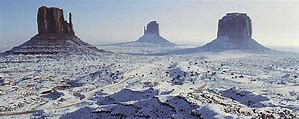


 RSS Feed
RSS Feed

